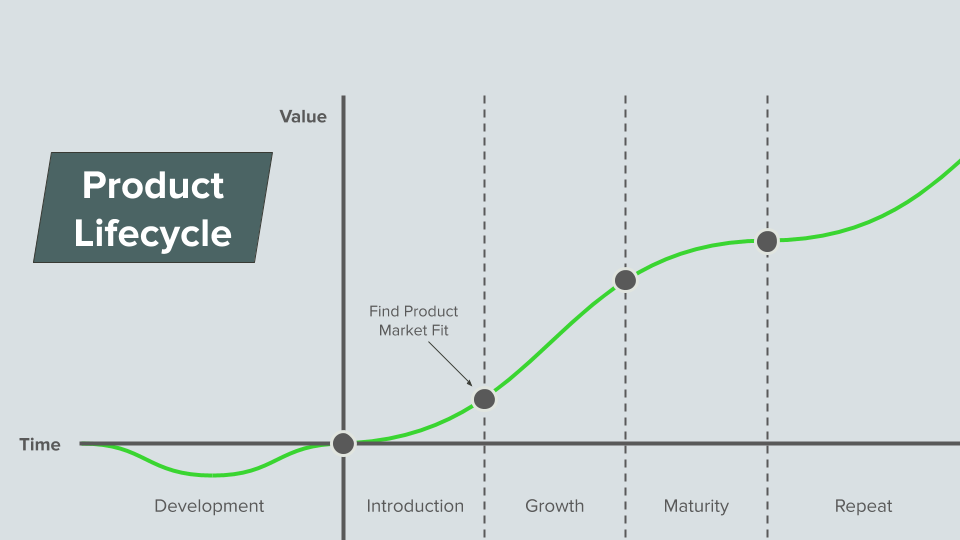What is Product-Market Fit?
-11.png?width=1200&name=Copy%20of%20Q3%20Blog%20Images%20(10)-11.png)
When you’re first introducing a new product, it’s best to start with a small group of consumers that have a large, immediate pain you can solve.
Once you start to see success with one group of consumers it’s easier to successfully introduce your product to larger, more complex audiences. Seeing success with that initial group is called achieving product-market fit.
What is Product-Market Fit?

Product-market fit is the transition between the introduction and growth stages of the product lifecycle. It occurs when a product substantially satisfies a challenge for a given segment of consumers.
It’s a binary checkpoint at the end of your go-to-market strategy that indicates whether or not your product is well-positioned for future growth.
Showing you can dominate a market is a trustmark in and of itself, so seeing success with a small market first will help you perfect your go-to-market strategy and accelerate your growth.
The people you sell to before you reach product-market fit are more comfortable taking risks and trying products that are still works in progress than mainstream consumers. As you approach reaching product-market fit, you should collect data from your users that can help you improve your product for use by a wider market.
Additionally, you should be gathering information from your initial users that can be turned into marketing collateral. Content like case studies and testimonials can help you build trust with prospects when you are selling to a wider market, and such content is vital for proving you’ve reached product-market fit.
How to Achieve Product-Market Fit
Achieving product-market fit starts long before you introduce your product to a market — it begins with the ideation behind your product itself.
In order to create a successful new product, you need to first identify a problem you want to solve. To understand how to address that problem, you’ll need to conduct research about who’s experiencing it, how it’s impacting them and what actions they’re taking to solve it.
The larger the pain, the better the opportunity there is for you. Your product needs to not only be better than existing alternatives but also enticing enough that people are willing to change their status quo.
Because of that, the impact the pain you solve has on a person’s daily life can be just as important for your product’s success as the size of your total addressable market. It may be easier to successfully launch a product that solves a big pain only a few people have than one that solves a small problem many people experience.
Once you know the problem your product will solve, you need to document who your product is intended for by creating buyer personas and ideal customer profiles.
Buyer personas are a semi-fictional representation of the people you market and sell to. They include information like what the person’s role is, what challenges they face on a daily basis, where they look for answers and what their goals are. Ideal customer profiles depicts the type of companies your buyer personas work at and includes firmographic information like industry and company size.
By understanding not just the people, but also the companies that experience the most pain, you’ll be able to build a minimum viable product (MVP) that solves your customers’ challenges.
An MVP isn’t the final version of your product that contains every possible feature. However, it does enough to alleviate your customer’s initial pains. Going to market with an MVP enables you to see some level of adoption with your product while obtaining feedback about how your customers want your product to evolve.
By incorporating customer feedback into your product development, you’ll have built loyalty with your existing customer base who’ve seen you be responsive to their needs while creating a product that can satisfy a wider audience.
For more information on navigating every stage of the product lifecycle while remaining customer-oriented, download our Comprehensive Guide to Product Marketing.
Guido Bartolacci
Guido is Head of Product and Growth Strategy for New Breed. He specializes in running in-depth demand generation programs internally while assisting account managers in running them for our clients.





